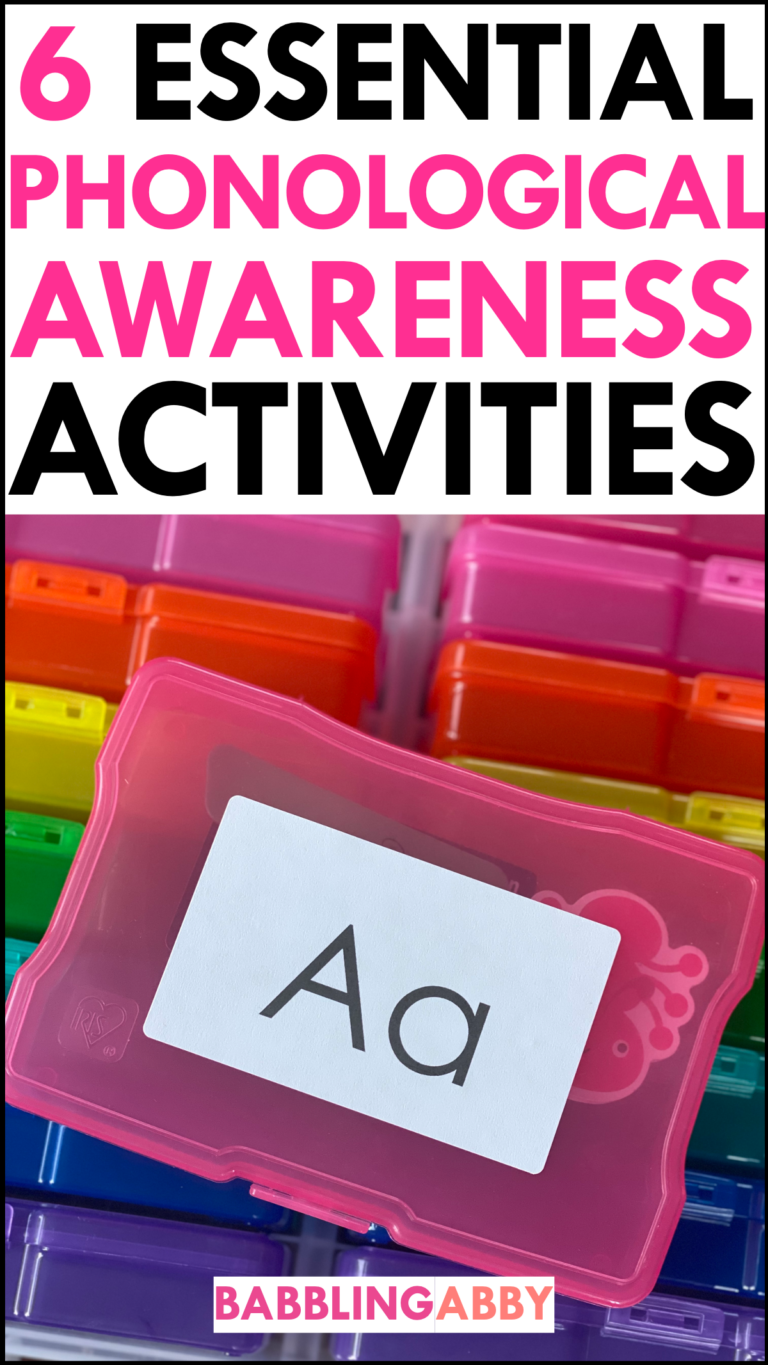

If you teach kindergarten or first grade, you may find yourself answering spelling-related questions often. In the classroom it was, Mrs. Mullins! How do I spell ______?! On repeat. All. Day. Long. My own children are now in kindergarten and first grade, and are daily asking, Mom! How do I spell _______?! This is what prompted the creation of the Picture Dictionary. Read on to learn more about picture dictionaries and why students need them!
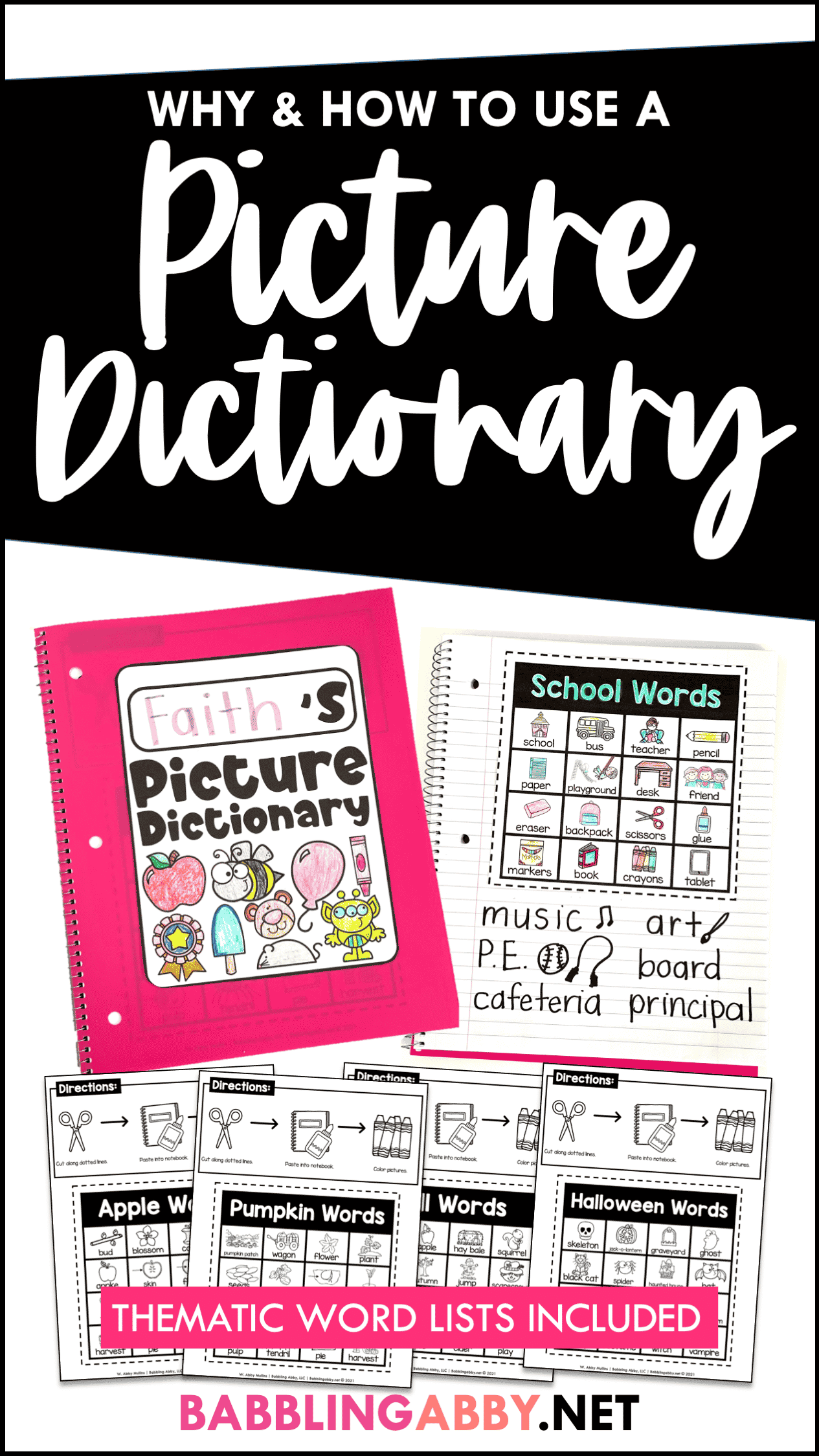
Young learners can be very self-centered (in a cute way😉) as they figure out how to be a part of the world. It makes sense. It also makes sense that they enjoy doing things themselves. “I can do it!” is a phrase we start hearing at age 2 or 3 and don’t stop hearing for a long time. The learners in your classroom are no different.
A picture dictionary gives students a sense of independence. It will show them how to correctly spell words instead of asking you. As they’re developing their spelling and writing skills they can refer to the Picture Dictionary for guidance. Bonus points for the student because they are feeling independent and accomplished. Bonus points for you because you saved time in your day not spelling a word for your student.
For your convenience, I have created a picture dictionary for young learners. Students from Preschool through 2nd grade levels will really thrive with the independence afforded them in this picture dictionary.

This picture dictionary organizes words by category. The categories are thematic – fall, transportation, and Halloween, for example. The categories help your students know where to search for the word they need to spell. Easy peasy!
Students will create their own picture dictionary. Each copy of the picture dictionary can be printed, cut, and pasted into a notebook. Students will have extra room to add some of their own words to the dictionary that weren’t included.
The pages will be updated seasonally so keep checking here to see what’s new. Feel free to leave suggestions of what categories you’d like to see included next.
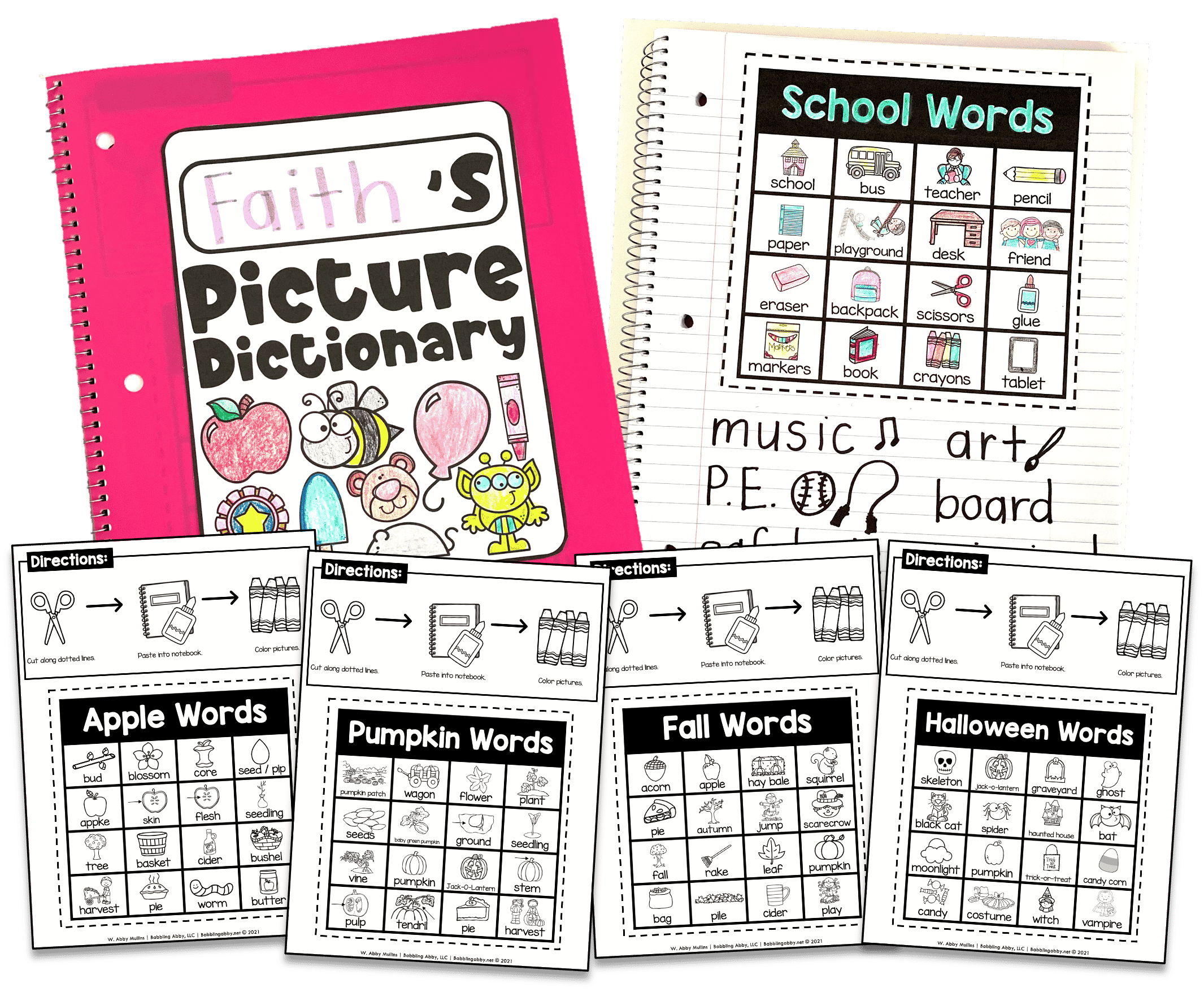
Do you have a writing center? Be sure to add a picture dictionary to it, or have your students bring theirs along!
Writing centers are a great way to encourage creativity in students. They allow them to explore their imaginations with new ideas and stories that create themselves. Using a picture dictionary allows that imagination to go even further. They can write without the frustration of not knowing how to spell a word they want to use.

Picture dictionaries are especially good for beginning writers. Your students have lots of stories in their heads. Lots of those stories require lots of words. Because they often write about their life, the picture dictionary will help them put their story on paper. The picture dictionary will help students tell their stories without asking how to spell every other word! Can I get an amen?!
Pair the picture dictionary with a free desk helper for your students! You can customize it with your students’ names, addresses, and phone numbers, too. It also includes easy access to the alphabet, numbers, and shapes!
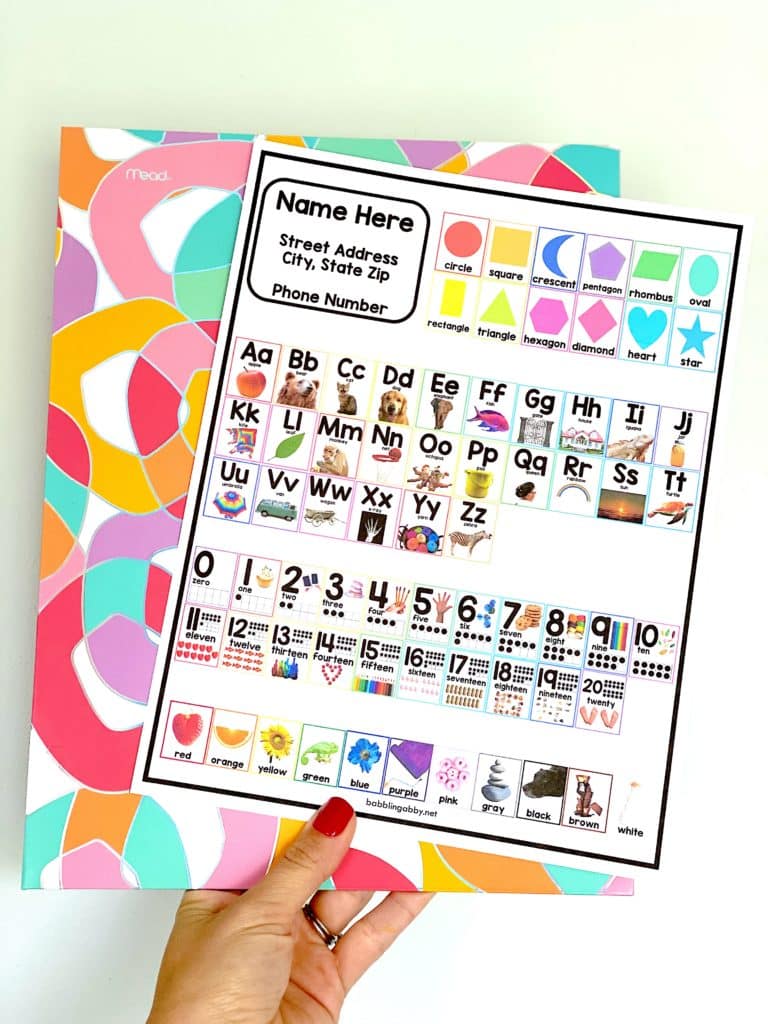
One of the main goals of a picture dictionary is to make students more independent and to ask the teacher fewer questions. This is true, but not because teachers can’t be bothered with something like spelling. Teachers love to help students and that is why they teach. However, it is the goal of all teachers to have independent students who can figure things out for themselves. Eventually, they mature in age and grade level and greater independence from the teacher will be necessary. By utilizing a picture dictionary, students are given yet another small stepping stone to becoming independent young people. Give your students a helping hand on their road to independence today!
These FREE resources are an instant download upon a confirmed subscription.
Yay! I'm so excited to connect with you! Now check your email to confirm your subscription. You freebies will download instantly upon confirmation 🙂
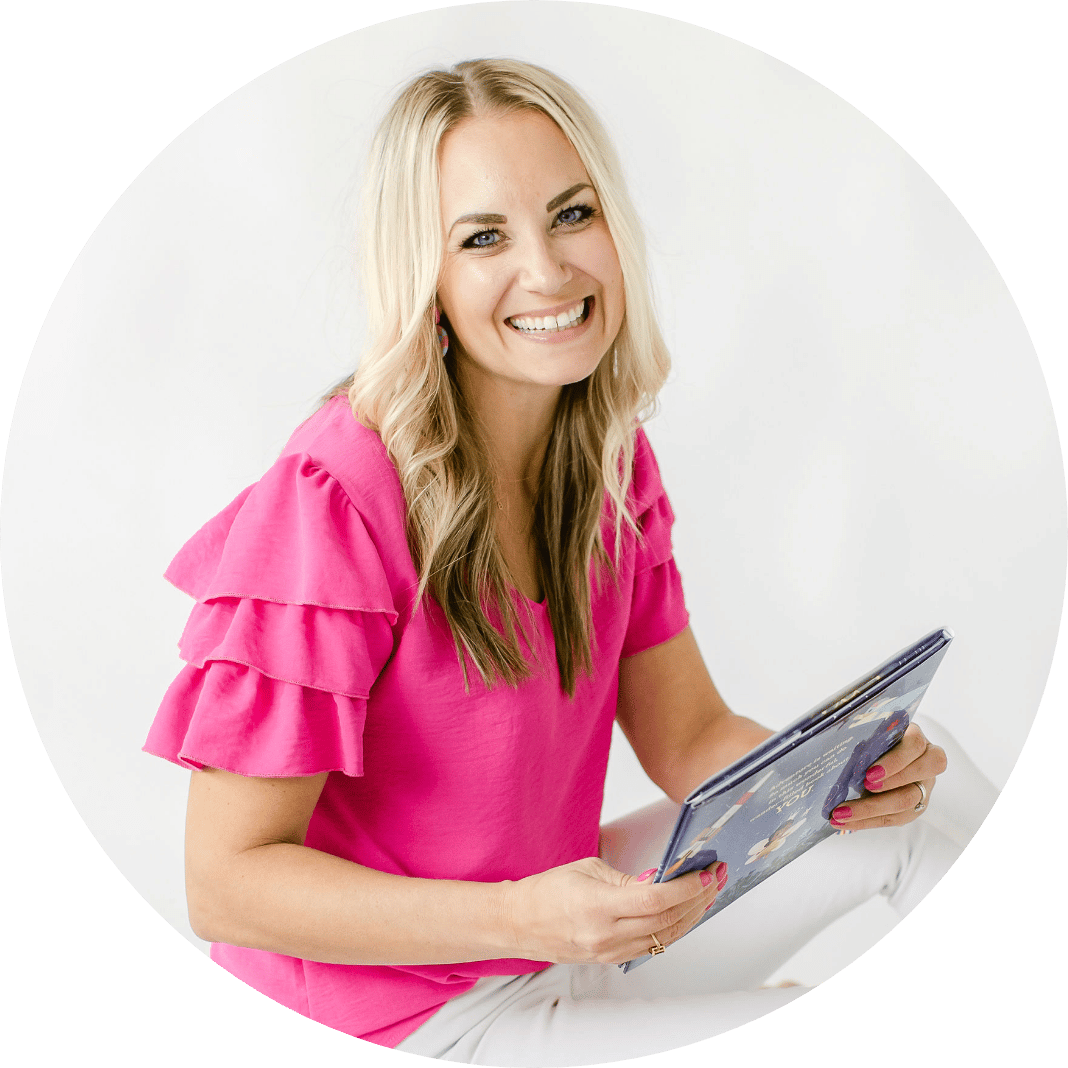
Abby is a former kindergarten and first grade teacher who channels her passion for education into creating engaging activities and resources for the kindergarten and first grade classroom. When not dreaming up or working on her next project, you’ll find her enjoying her family – most likely in her minivan on the way to a soccer field.

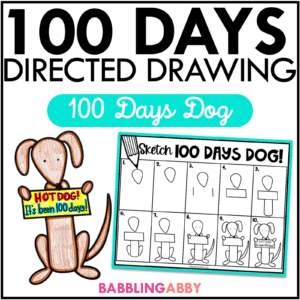

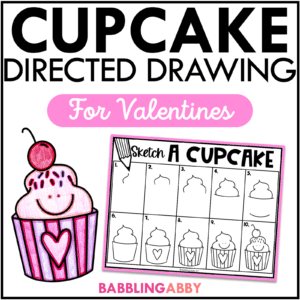

Help your students build their phonemic awareness with this simple segmenting activity. Get 25 FREE practice pages sent to your inbox today.
©2022 Babbling Abby. All Rights Reserved.